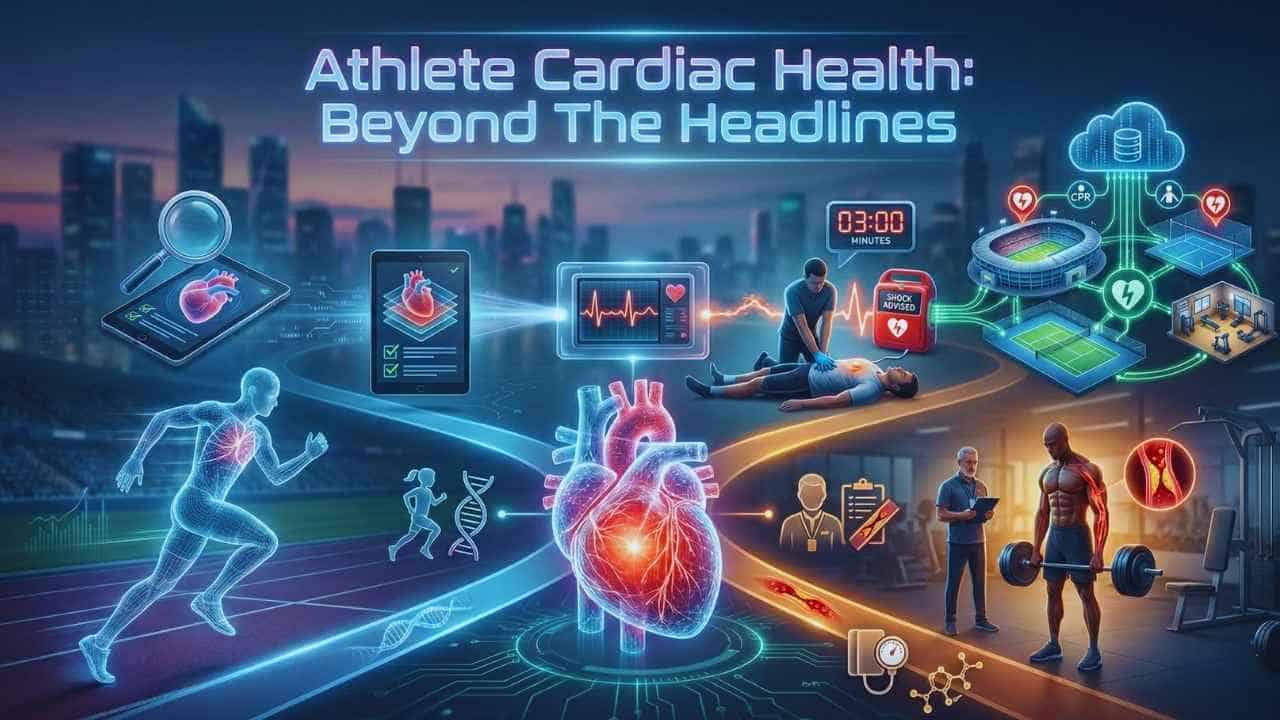Eating disorders are intricate and formidable conditions that pose significant challenges in treatment, despite notable advancements in recent years. Individuals diagnosed with eating disorders often find themselves cycling through various treatment programs, underscoring the persistent difficulties in achieving and maintaining long-term recovery. This ongoing struggle highlights the necessity for a deeper understanding of the multifaceted nature of eating disorders and the continuous improvement of treatment methodologies.
The Seriousness of Eating Disorders
A widespread misconception about eating disorders is the belief that they are not severe or life-threatening illnesses. This misunderstanding significantly contributes to the alarming statistic that approximately 90% of individuals with eating disorders never receive treatment or remain undiagnosed. The perception that eating disorders are merely about food and weight overlooks the profound psychological and physical ramifications these conditions entail. Recognizing eating disorders as serious mental health conditions is crucial for improving detection, reducing stigma, and increasing the likelihood that those affected will seek and receive the necessary treatment.
Relapse Rates and Ongoing Struggles
Even among those who proactively seek professional help and achieve what appears to be full recovery, the journey does not always end there. About one-third of these individuals experience relapses, where they return to disordered eating behaviors after a period of improvement. These relapses can be triggered by various factors, including stress, significant life changes, or the cessation of structured support systems. The enduring nature of eating disorders necessitates ongoing support and comprehensive treatment strategies that extend beyond initial recovery phases to address the potential for relapse and to provide continuous care.
The Complex Nature of Eating Disorders
Eating disorders do not stem from a single cause; rather, they arise from a confluence of various factors that interplay uniquely in each individual’s life. Understanding these factors is essential for developing effective treatment plans tailored to each person’s needs.
Multifactorial Causes
Research indicates that eating disorders can result from a combination of psychological, biological, and social factors:
- Mental Health Issues: Conditions such as depression, anxiety, and obsessive-compulsive disorder often co-occur with eating disorders, exacerbating their severity and complicating treatment.
- Body Image Concerns: Societal pressures and personal dissatisfaction with one’s body can drive individuals toward unhealthy eating behaviors as a means of coping or exerting control.
- Biological Influences: Genetics play a significant role, with studies showing that individuals with a family history of eating disorders are at a higher risk. Additionally, imbalances in brain chemistry can contribute to the development of these disorders.
- Environmental Factors: Experiences such as trauma, bullying, or significant life transitions can trigger or worsen eating disorder symptoms.
Demographic Considerations
While eating disorders can affect individuals of any weight, age, gender, race, or socioeconomic background, they are most commonly diagnosed during adolescence and young adulthood. This age group is particularly vulnerable due to the rapid physical, emotional, and psychological changes they undergo, which can trigger negative thoughts and emotions about body image and self-worth.
Why Adolescence and Young Adulthood?
During adolescence and young adulthood, individuals experience significant growth and development. These years are marked by heightened sensitivity to peer opinions, increased exposure to societal standards of beauty, and the formation of personal identity. These factors contribute to the prevalence of body image concerns, making this demographic especially susceptible to developing eating disorders. Furthermore, the transition from dependence to independence can create stress and anxiety, which may manifest as disordered eating behaviors as a coping mechanism.
Body Dysmorphia and Its Impact
Body dysmorphia, a separate yet related mental health condition, involves an obsessive focus on perceived flaws in one’s appearance. This fixation can severely distort self-image and exacerbate eating disorder behaviors. Individuals with body dysmorphia may engage in extreme dieting, excessive exercise, or other disordered eating practices in an attempt to rectify perceived imperfections. This obsession not only hinders recovery but also complicates treatment efforts, as addressing the underlying body image issues becomes a critical component of the therapeutic process.
Delving Into the Psychology Behind Eating Disorders
A common misconception is that eating disorders are solely about food, calories, and weight. While these elements are often at the forefront, the underlying psychological factors are what truly drive disordered eating behaviors. Understanding these deeper motivations is essential for effective treatment and long-term recovery.
Seeking Control Through Disordered Eating
For many individuals, disordered eating habits serve as a means to regain a sense of control in their lives. When other areas feel overwhelming or uncontrollable, manipulating food intake and body weight can provide a semblance of order and agency. This behavior can create a vicious cycle: as individuals use eating disorders to exert control, the disorder itself reinforces the need for control, making it increasingly difficult to break free from these harmful patterns.
The Vicious Cycle of Control and Fear
The pursuit of control through eating disorders can lead to heightened anxiety and fear surrounding food and body image. This fear often intensifies as individuals attempt to maintain their disordered behaviors, leading to increased rigidity and resistance to change. The resulting psychological strain can make treatment more challenging, as the very behaviors intended to provide control become barriers to recovery.
Distorted Self-Image and Therapy
Many people with eating disorders grapple with a distorted self-image, harboring negative perceptions of their bodies and an intense fear of gaining weight. These distorted self-images can severely impact self-esteem and overall mental health. Consequently, treatment programs frequently incorporate various types of therapy aimed at addressing these psychological challenges:
- Cognitive Behavioral Therapy (CBT): Helps individuals identify and modify negative thought patterns and behaviors related to eating and body image.
- Interpersonal Psychotherapy (IPT): Focuses on improving interpersonal relationships and social functioning, which can influence eating behaviors.
- Acceptance Commitment Therapy (ACT): Encourages individuals to accept their thoughts and feelings rather than fighting them, fostering psychological flexibility and resilience.
Effective Treatments for Eating Disorders
Current eating disorder treatments encompass a range of established therapeutic methods, each designed to address different aspects of the disorder. The effectiveness of these treatments often depends on the individual’s specific needs and the severity of their condition.
Cognitive Behavioral Therapy (CBT)
CBT is one of the most widely used therapeutic approaches for treating eating disorders. It focuses on identifying and challenging distorted thought patterns and beliefs that contribute to unhealthy eating behaviors and negative body image. Through CBT, individuals learn to develop healthier coping mechanisms, improve self-esteem, and foster a more positive relationship with food and their bodies.
Interpersonal Psychotherapy (IPT)
IPT addresses the interpersonal relationships and social dynamics that may contribute to the development and maintenance of eating disorders. By improving communication skills, resolving conflicts, and enhancing social support networks, IPT helps individuals create a more supportive and understanding environment, which can reduce the reliance on disordered eating behaviors as a coping mechanism.
Acceptance Commitment Therapy (ACT)
ACT emphasizes the acceptance of one’s thoughts and feelings rather than attempting to change or eliminate them. This approach helps individuals develop psychological flexibility and resilience, enabling them to live in accordance with their values despite the presence of challenging emotions or thoughts. By fostering a non-judgmental attitude towards themselves, individuals can reduce the impact of negative body image and unhealthy eating patterns.
Family-Based Treatment (FBT)
For adolescents, Family-Based Treatment (FBT) is a critical component of eating disorder treatment. FBT involves the patient’s parents and immediate family members in the therapeutic process, empowering them to support their child’s recovery. This approach helps families understand the dynamics of eating disorders, develop effective strategies for managing symptoms, and create a supportive home environment conducive to healing. Involving the family can be especially beneficial, as it provides a strong support system and reinforces positive behaviors outside of the treatment setting.
Levels of Care
Eating disorder treatment varies in intensity, with different levels of care designed to meet the specific needs of each individual:
- Outpatient Services: Suitable for those with mild to moderate eating disorders, allowing individuals to receive treatment while maintaining their daily responsibilities.
- Intensive Outpatient Programs (IOP): Offer more structured support than standard outpatient services, often including multiple therapy sessions per week.
- Partial Hospitalization Programs (PHP): Provide a higher level of care, with individuals attending treatment during the day but returning home at night.
- Residential Treatment: Involves living at a treatment center full-time, providing comprehensive care and support in a structured environment.
- Inpatient Hospitalization: Necessary for individuals with severe eating disorders or those at risk of life-threatening complications, offering 24-hour medical and psychiatric care.
The level of care is customized based on the severity of the disorder, ensuring that each patient receives the most appropriate and effective support for their recovery journey.
Why Treatment Remains Challenging
Despite the availability of various treatment options, many individuals with eating disorders remain resistant to seeking or continuing treatment. Understanding the barriers to treatment is essential for developing strategies to overcome them and improve recovery outcomes.
The Role of Nutritionists and Dietitians
Most eating disorder treatment centers include nutritionists or dietitians who create personalized meal plans tailored to the patient’s nutritional needs. While this is a crucial aspect of recovery, it can be highly triggering for individuals with eating disorders, especially at the beginning of treatment. The focus on food and eating can exacerbate anxiety and resistance, making it challenging for patients to adhere to meal plans and engage fully in the therapeutic process.
The Risk of Relapse After Treatment
One of the significant challenges in treating eating disorders is the high risk of relapse after discharge from treatment centers. Weight restoration, a common goal in many treatment programs, can induce intense anxiety about gaining weight, leading some individuals to revert to disordered eating behaviors once they leave the structured environment of a treatment center. This fear of weight gain often undermines the progress made during treatment, making sustained recovery difficult to achieve.
Embracing the Recovery Process
Understanding that lapses and relapses can be part of the recovery journey is essential for both patients and their support systems. Recognizing the signs of relapse and knowing how to seek help promptly can significantly improve the chances of returning to a stable and healthy state. Continuous support, whether through follow-up therapy sessions, support groups, or family involvement, plays a critical role in maintaining recovery and preventing relapse.
Innovative Approaches to Treatment
In response to the challenges of treatment resistance and high relapse rates, many treatment centers are adopting innovative approaches that focus on harm reduction and minimizing the disorder’s impact on the patient’s daily life. These new strategies aim to enhance the effectiveness of treatment by addressing the root causes of eating disorders and supporting individuals in their recovery journey more holistically.
Focus on Functionality and the Bigger Picture
Innovative treatment approaches emphasize improving how patients function in their everyday lives, helping them to see beyond the immediate challenges posed by their eating disorders. By focusing on broader life goals and overall well-being, these approaches encourage individuals to engage in meaningful activities, develop healthy relationships, and pursue personal interests, thereby reducing the disorder’s hold on their lives.
Personalized Treatment Plans
Advancements in mental health treatments have paved the way for more personalized treatment plans that cater to each patient’s unique needs. By assessing individual strengths, challenges, and preferences, therapists can create customized strategies that target specific issues and leverage personal strengths. This personalized approach increases the likelihood of successful recovery by ensuring that treatment is relevant and effective for each individual.
Long-Term Lifestyle Maintenance
Many modern treatment programs now emphasize fundamental methods such as harm reduction, living with an eating disorder in a controlled manner, and maintaining a healthy and happy lifestyle post-treatment. These strategies support individuals in sustaining their recovery by promoting balanced eating habits, regular physical activity, and positive self-image. Additionally, programs often include relapse prevention techniques and ongoing support systems to help individuals navigate the challenges of maintaining long-term recovery.
Moving Forward: Steps Toward Recovery
While resistance to treatment remains a significant hurdle for many individuals with eating disorders, finding the right treatment plan and a provider that aligns with an individual’s specific needs is the first crucial step toward successful recovery. Continued advancements in therapy and a deeper understanding of the complexities of eating disorders offer hope for more effective and lasting solutions. By fostering a supportive and informed environment, society can better assist those struggling with eating disorders in their journey toward healing and well-being.
Building a Supportive Environment
Creating a supportive environment involves reducing stigma, increasing awareness, and providing accessible resources for those in need. Education campaigns that highlight the seriousness of eating disorders and the importance of seeking help can encourage more individuals to pursue treatment. Additionally, fostering a community of support through family involvement, peer groups, and mental health professionals can enhance the effectiveness of treatment and promote sustained recovery.
The Role of Policy and Advocacy
Policy changes and advocacy efforts are essential for improving access to treatment and ensuring that individuals with eating disorders receive the care they need. This includes advocating for better insurance coverage for mental health services, increasing funding for eating disorder research, and promoting policies that support mental health education and prevention programs in schools and communities.
Future Directions in Treatment
As research continues to uncover the underlying mechanisms of eating disorders, future treatment approaches are likely to become even more effective and personalized. Innovations in technology, such as teletherapy and digital health tools, are expanding access to care and providing new avenues for support. Additionally, integrating holistic practices, such as mindfulness and yoga, into treatment programs can offer additional benefits for individuals in recovery, promoting overall well-being and resilience.
Eating disorders are complex and multifaceted conditions that require comprehensive and individualized treatment approaches. While challenges in treatment persistence and relapse rates remain, ongoing advancements in therapy and a deeper understanding of the psychological and biological underpinnings of these disorders provide hope for more effective and lasting solutions. By fostering a supportive environment, reducing stigma, and continuing to innovate in treatment methodologies, society can better support individuals in their journey toward recovery and a healthier, happier life.
Takeaways
One of the biggest challenges in treatment is the deeply ingrained beliefs and behaviors that individuals develop over time. These behaviors often serve as coping mechanisms for underlying issues such as anxiety, depression, or trauma, making it difficult for those affected to let go of their eating disorder without addressing these root causes. Additionally, the physical toll that eating disorders take on the body can complicate recovery, as the damage to organs, metabolic systems, and overall health often requires long-term medical intervention.
Another hurdle in effective treatment is the stigma that surrounds eating disorders. Many people, including those suffering, may not fully understand the severity of the condition, viewing it as a matter of willpower rather than a serious mental health issue. This stigma can lead to delayed treatment and a reluctance to seek help, further exacerbating the disorder.
Moreover, even with advances in therapy and medical interventions, there is no one-size-fits-all treatment. Each person’s experience with an eating disorder is unique, requiring a tailored approach that addresses their specific needs. Treatment often involves a combination of therapy, nutritional counseling, and medical care, which can be time-consuming and emotionally draining for both patients and their families.
Despite these challenges, recovery is possible. A multidisciplinary approach that combines medical, psychological, and nutritional support, along with a strong network of family and friends, plays a vital role in helping individuals overcome their eating disorders. Continued research, education, and advocacy are also essential in reducing stigma and improving treatment options.






































